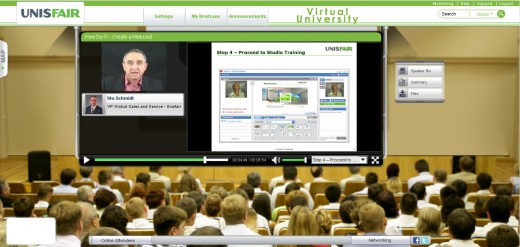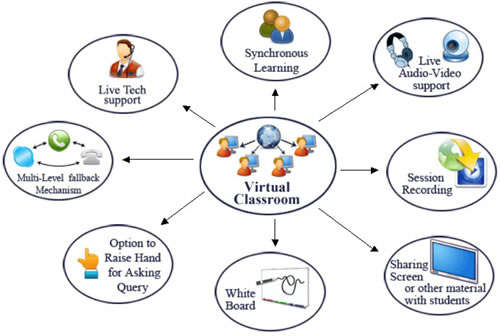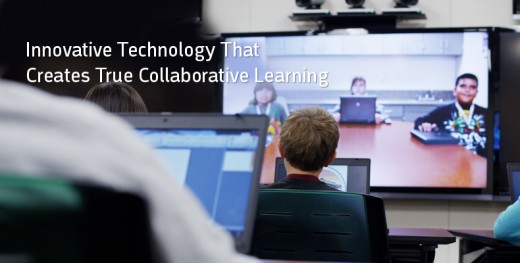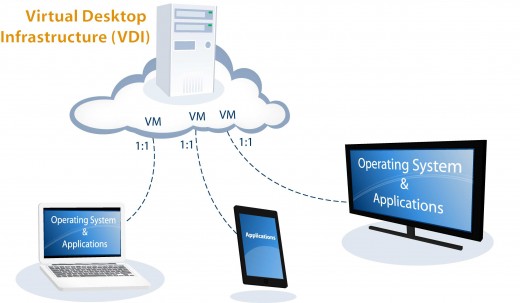It's a Virtual World 2019 updated

Offices and classrooms disappear with virtual desktops
Arun Nadkarni, chief information officer, Thermax Ltd, Pune, India had a major problem. Revenues of his Rs 4,366.46 crore company had remained stagnant for FY14, though exports grew at a scorching pace of 11.9 per cent. But the thermax management, which had technology joint ventures with global multinationals such as the US's Babcock and Wilcox Georgia Pacific; Japan's Kawasaki Themal Engineering; Blacke durr from Germany; and Canada's Eco-Tech, knew exports were th key to tide the company over, till domestic market picked up.
But Nadkarni's problem was dual. Thermax was burdened with an ancient information technology tops. Its 4,600 employees, eager to see the company progress, had to work on an IT network, which was over six years old and could not adapt to the latest software or operating systems necessary for the company's growth.
"Thermax was unable to leverage new technology vital for the company's growth and, more importantly, secure and be in control of its core intellectual property, the engineering drawings, which had to be storred, protected and managed centrally," says Nadkarni. "As the company bid for international projects, it could not afford leaks, which were possible with the old IT infrastructure. So, securing such data was a big challenge Thermax faced."



How virtual Reality Works
In addition, the high concentration of engineers saw tremendous pressure on the hardware And, so, demands were building up, calling for an upgrade, with the immediate replacement of 1,000 desktops. But, for Nadkarni, an additional headache was that another upgradation would be needed five years later, albeit at a higher cost. He found his answer in virtual desktops.
Solution informatioin officers in indian companies are turning to there new devices too especially with employees bringing their own flat devices, such as tablets, smart phones, i-pads and laptops, to the work place. Though it raised the question of employee accessibility information passed through their own devices to the company data, as information passed through their own devices to the company server, it also enabled smooth functioning leading to higher productivity.
Addressing these problems more is Microsoft's division Citrix systems, which has come up with its Xen Desktop, literally putting the 'V' back in virtualisation. The new omobile industry wants to access the Microsoft software eliminates physical boundaries in offices and schools and allows people to work real time.
Let's say - a designer in the automobile industry wants to access the 3D blueprints of the next generation hybrid car or an architect is seeking plans for new building construction, which could entail a group discusssion across five states. All they have to do do is to just log in -the virtual desktop will handle the rest.
For employees who are looking at flexibility at work by staying at home and operating with any type of device, virtual desktop allows it. Through XenDesktop, employees are permitted remote access, across any boundary or time zone, to the company server and data.
Currently with the market worth $1.8 billion globally, gartner Research estimates that, due to the large-scale benefits of virtual desktops, 40 percent of Indian corporates will be VD compatible by 2015, as compared to a mere 2 percent in 2012- eshe top few countries globally, which largely hae adopted personal devices especially, as India is amongst the top few countries globally, which largely have adopted personal devices at the workplace.
As much as 38 percent of India's working population uses personal devices at workplace. It is ranked fourth, preceded by Brazil, China and the Netherlands in this race (the global average is 34 percent).
What triggered the boom in India was the introduction of the Aakash Tablet in 2011, which many consider a game changer, to the entire mobile and internet industry. Priced at Rs 2,700 (Rs 1,500 for students), as against models from the west, which cost Rs 15,500-49,000, the Aakash Tablet opened a whole new vista of communication. Adding to this is India's low-cost cellular and mobile data plans, which costs less than one-tenth of what it does in the US.
Once restricted to banking, financial services, insurance companies and BPOs, services, insurance companies and BPOs, Citrix's XenDesktop is now attracting the attention leading companies across all sectors. Even schools with virtual classrooms are gaining popularity, especially with costs averaging about Rs 2,500 for the conversion per desktop (which is a one-time expense). Depending on the number of users who need the central cloud system to store their data, the charges start at Rs 5 lakh annually. Over 3,000 companies including HDFC Bank, Thane Janata Sahakari Bank Essar group, Thermax, Indraprastha Apollo Hospital, Wonder Cement, The Sona group, BPO, Ratnakar Bank, Intel Corp, Syntel Inc, Prefitti Ban Melle and Amity school of Distance Learning are converting to the new mode.

Cutting Costs
AMG India International now plans to proide computer access to schools located in remss to power, through virtual desktops, which helps maintain low budgets too. Here, through VD, a single PC is shared by as many as 11 users. AMity group found its energy costs falling because of virtual desktops installed at its 40 computer laboratories as early as April 2013. Its requires a UPS of 3 kVA today, as compared to 10 kVA earlier. Similarly, the Rajasthan-based Western Cement saw the number of servers it required halve to seven and power consumption fall by 60 percent after implementing Citrix's virtual desktop.
"We are able to provide a high uptime of around 98.5 percent to business," says Arun Attri, general manager, IT, wonder Cement Limited. "Also, significant reductions have been effected in both capital expenditure and in power consumption, while also achieving the much needed flexibility."

Examples of Virtual Reality
There are times when I do not go to the office for weeks together," says Atul Ahuja, director, desktop and apps, Microsoft Alliance Citrix Systems. "And similar flexibility is benefiting everyone. The biggest beneficiary will be the small and medium businessmen because they had to outsource and needed a larger company to oversee their IT departments. This bottleneck will now be eliminated." But, at the end of the day, it is the company that's in a win-win situation, as the management and the employee benefit equally. For the employee, the flexibility of working from a location of choice and the ability to access the requisite data from the company at any time bring in a lot of satisfaction. And, for the company, since the data remains in its own server, with no transactions happening at the end-point devices and no data being stored there, the risk of information theft is negligible. Applications and desktops are completely secure over the network to the endpoint and the threat of data leakage and hacking is the threat of data leakage and hacking is also minimal.
Not surprisingly, several Indian companies are going in for virtual desktops. Essar is shifting 40,000 of its employees on to virtual desktops. Microsoft claims that will save the company more than 40 percent in desktop computing costs by enabling easy, centralized management of desktops and applications. It also saves on the cost incurred to refresh expensive hardware.








